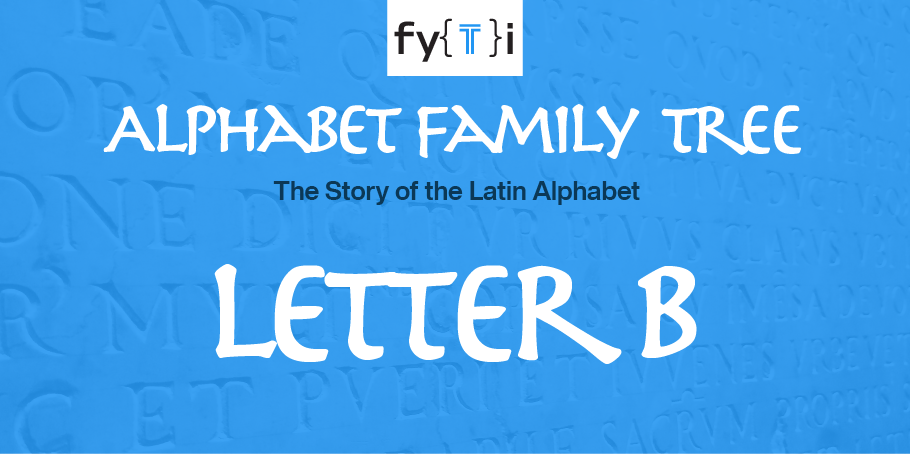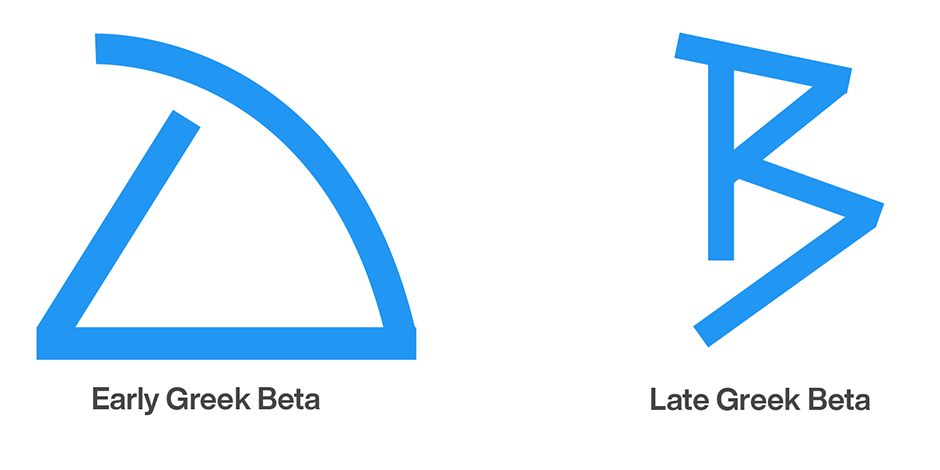Alphabet Tree - The Letter B

People generally consider shelter the second most important ingredient for human survival. The second letter of the Roman alphabet evolved from the ancient Egyptian hieroglyph attributed to shelter. Although the designs are somewhat different, there is a recognizable correlation between this Egyptian hieroglyph and the second letter of the Phoenician alphabet, which evolved from it, which also meant “house”. The Phoenicians called this letter beth, their word for “house”.

The Phoenicians were traders, in the ninth century B.C.; the foremost merchants of the Mediterranean. They developed their alphabet for business purposes, and through the course of their travels spread it throughout most of the ancient western world.
Beth was one of the 19 characters the Greeks acquired from the Phoenician traders, that became the basis of their alphabet. In the process, they changed the name slightly from beth to beta.
While the name change was minor, the eventual Greek beta looks quite different from the Phoenician beth. This change took place gradually over many years. First the character was inverted so that the triangle was at the base. Then, through continual use and, perhaps, because symmetry was so important to the Greeks, a second triangle was added – and the two triangles ended up on the right side of the character.

The Greek beta further evolved in the hands of the Romans. They changed its name to bay, and more importantly, formalize the curved strokes.
The Romans were some of the first calligraphers in the western world. They brought flowing lines and graceful curves to their alphabet. It was art born of technology. The early Greeks drew their letters by scratching through a soft wax coating applied to a wooden board; this forced them to work primarily in short, straight lines. By the time the Romans inherited the precursor to our present alphabet, letters were drawn using flat pens and brushes on a smooth writing surface; the result was the naturally-proportioned letters we are now familiar with.

From the Phoenician square “house,” the B evolved into one of the most beautiful letters of the Roman alphabet.

ITC Benguiat
In the late 1970s, while working at Herb Lubalin’s design studio, Ed Benguiat was asked by a friend to design a logo for a new store. Benguiat created hundreds of trail drawings for the logo before the friend made his choice. This, however, was not the basis of the ITC Benguiat typeface family. That was a sketch somewhere about halfway back in the proposal process.
Benguiat had become enamored with a suite of the earlier letter shapes and continued to draw variations. After some time, Lubalin finally declared that this doodling was taking up too much of Benguiat’s energy
Although he officially stopped drawing, Benguiat reviewed his drawings and decided that he had the makings of a typeface. ITC’s Review Board agreed and, in 1977, the ITC Benguiat typeface family was released.
Benguiat was often asked about this best, or favorite, typeface design. He would, almost always, say that it would be his next one. “I’ve never been satisfied with my work,” he’d confess. “I want each typeface, each piece of lettering, every logo I design, to be better than the last.”
Once, when pressed, however, Benguiat looked around to be sure that none of his other typeface designs were listening, and coyly answered, “I’m pretty fond of ITC Benguiat.”

Download a pdf version of the Alphabet Tree - The Letter B and view the ITC Benguiat® font family.